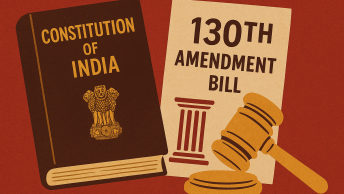With an aim to re-instate the confidence among the stakeholders towards the process of dispute resolution and to ameliorate the negative global perception of doing business in India, the Arbitration and Conciliation (Amendment) Bill, 2018 (“the Bill”) was recently passed by the Lower House of the Parliament (Lok Sabha). The Bill, which was introduced following the recommendations of the High Level Committee (“the Committee”) constituted by the government under the Chairmanship of Justice (Retd.) B. N. Srikrishna, seeks to amend the Arbitration and Conciliation Act, 1996. The Committee was mandated to review the “institutionalization of arbitration mechanism in India” and revamp the traditional ad hoc arbitration culture, thus pushing India to become an international arbitration hub.
As it has been previously discussed on IndiaCorpLaw blog here and here, the changes suggested by the Committee envisioned India with a robust institutionalized arbitral mechanism, harmonious with the international best practices. However, various provisions of the proposed Bill seem to be departing from the recommendations of the Committee. In this post, we analyze the points of divergence of the Bill, which could nullify the possible benefits of the laudable recommendations of the Committee.
I. Arbitration Council of India acting as a regulator instead of facilitator of arbitral institutions
The most significant recommendation of the Committee was to establish an autonomous body for grading of arbitral institutions present in the country. It was hoped that grading these institutions and designation of cases on the same basis would encourage these institutions to advance in terms of their infrastructure, facilities and services. The Committee, however, accentuated that the body should not act as a regulator, set up by the government, while grading these institutions since regulating an arbitral institution is inconsistent with the idea of ‘party autonomy’ which is fundamental to arbitration. Therefore, it was suggested that the Chairperson of the Council was to be appointed by an independent governing body comprising of the members of the Council. It was done to ensure that the functioning of the Council is completely segregated from the interference of the government. The Bill, on the contrary, has introduced certain provisions that may change the role of the body:
In sub-section 1 of Section 43C, the Bill prescribes the appointment of Chairperson of the body by the Central government, albeit in consultation with the Chief Justice of India. This lowers the integrity of the body since other members of the Council are also to be appointed by the central government in consultation with the Chairperson alone. Autonomy of the Council was central to the setup designed by the Committee because the Indian government is the biggest litigant in the country. Jeopardizing the self-governing nature of the Council would mean that the Council is most likely to be plagued by all the problems that are associated with government institutions in the country.
II. Failure to prescribe voluntary nature of accreditation
The Committee was mindful of the fact that empowering a body with such powers could breed corruption. Hence, accreditation was not made mandatory for recognition and enforcement of award made by these institutions i.e. the grading of arbitral institutions was suggested to be voluntary instead of mandatory. As discussed above, the idea of the Committee was to inculcate and evolve minimum standards for the institutions that were to administer arbitrations in India. On the contrary, the Bill has made this provision mandatory by failing to specify any provision in this regard. This would undo the possible benefits arising from the proposed setup in a two-fold way, at least. Firstly, it undermines the principles of party autonomy as parties would be restricted to select institutions accredited by ACI in order to have an enforceable arbitral award. Secondly, it is likely that monopolizing an institution with such powers would breed unfair practices and undermine the Council’s legitimacy.
III. No provision for a specialist arbitration bar and specialist arbitration bench
One of the key causes behind poor state of affairs regarding practice of arbitration in India is its severe ties with litigation. In order to do away with this, the Committee proposed the idea of creation of a dedicated arbitration bar. The scheme had worked impressively in other states in the past, particularly in jurisdictions such as Switzerland, France, and UK, where persons enrolled in arbitration bar keep themselves free to appear only before arbitrators and not courts. Furthermore, the Committee had envisioned creation of commercial divisions in courts and capacity building for judicial officers, in order to curb the issue of judicial delays and inconsistent interpretations. The objective of forming a specialist bar was to foster healthy arbitration practice among practitioners and providing training in arbitration law to students and interested lawyers. Similarly, creation of specialist arbitration benches aimed at resolution of international disputes through specialist benches similar to Singapore International Commercial Court. Unfortunately, the bill has skipped both the recommendations in its entirety and having a dedicated arbitration bar and bench doesn’t look like becoming a reality in India any time soon.
IV. Absence of provisions for a permanent standing committee
The Committee had recommended setting up a permanent standing committee under the aegis of the Council that can help liaise with the government for building strategies for promotion of arbitration regime of the country. Such a committee was to be established along the lines of Hong Kong’s Advisory Committee on Promotion of Arbitration or the recent International Commercial Expert Committee established by the Chinese Supreme People’s Court which has the mandate of reviewing and advising on best practices for promotion of arbitration around the globe. However, to much dismay, the Bill has left the issue in abyss.
V. Bar to the designation of graded arbitral institutions by the High Courts
In order to ensure speedy appointment of arbitrators, the Committee had suggested appointment of arbitrators by accredited arbitral institutions designated by the Supreme Court (for international commercial arbitrations) and High Courts (for domestic arbitrations) under Section 11 of the Act. In order to make the process more efficacious, it had empowered the High courts to designate institution from across the nation, irrespective of its jurisdiction. Contrary to this, the Bill has proposed amendment of Section 11 of the Act by inserting a proviso to sub-section 3A that mandates the High Courts to maintain a panel of arbitrators in the absence of any graded arbitral institution in the concerned State. This may prove detrimental to the interest of smaller states with unrecognized or no arbitral institutions.
VI. Failure to specify provisions for ‘an emergency arbitrator’ and ‘an emergency award’
An important determinant for parties to opt for institutional arbitration is to obtain urgent interim relief by an ‘emergency arbitrator’ prior to the constitution of the tribunal. The concept is omnipresent in institutional arbitrations (like SIAC, HKIAC, ICC etc). On the other hand, in India, rules of reputed arbitration institutions (like Mumbai Centre for International Arbitration) provide for emergency arbitrators and awards, while the Act itself contains no such provision. To solve this conundrum, the Committee had proposed an amendment to Section 2 of the Act. However, the Bill finds no mention of this amendment, meaning that the feature of enforcement of emergency awards in India would still be absent in all arbitration proceedings. This regime could see a resurge of litigation on enforcement of such awards.
Conclusion
The work of the Committee on reforming institutional arbitration in India was undeniably remarkable. The proposed recommendations sought to heal the root causes of the abysmal state of Indian arbitration regime. However, the aforementioned deviations from the key provisions show that the Bill failed to do justice to the Committee’s report.
After having most of the normative issues fixed, the arbitration regime still demands an overhaul of its institutional setup. A handful of pro-arbitration rulings will not contribute in promotion of arbitration in India in the long run. The institutional setup, as suggested by the Committee, had ‘autonomy’ in the central role. However, the bill jeopardizes the autonomy of the body, thereby also curbing party autonomy. As stated above, the overarching powers conferred over the government could plague the Council with issues such as corruption, unjustified political influence and red-tapism. Therefore, long-run demands a network of well-trained arbitrators and judicial officers who are promoted, and not regulated, by an independent body as envisaged by the Committee.
Despite the fact that the proposed Bill is set to revamp the ad hoc culture of dispute resolution, the Bill in its current form is still not a panacea to all the problems associated with arbitration in the country. Nevertheless, India has come a long way in developing a systematic regime of arbitration law and now it can only be hoped that the Upper House of the Parliament (Rajya Sabha) suggests some amendments in the Bill and envision the intention of the Committee to institutionalize arbitration in its true sense.







“Business registration seemed like the most obvious thing for my company, till I read your article on the different types of legal entities. Thanks for the information.”
thanks for giveing this information.
Help, When You Need it Most, the name you may trust and easy to remember.
Full Transeperancy with each and every client, Provide best legal advice.Best Legal Experts Team.
best advocate in delhi
Thanks for sharing. I read many of your blog posts, cool, your blog is very good. https://www.binance.com/en-IN/register?ref=UM6SMJM3